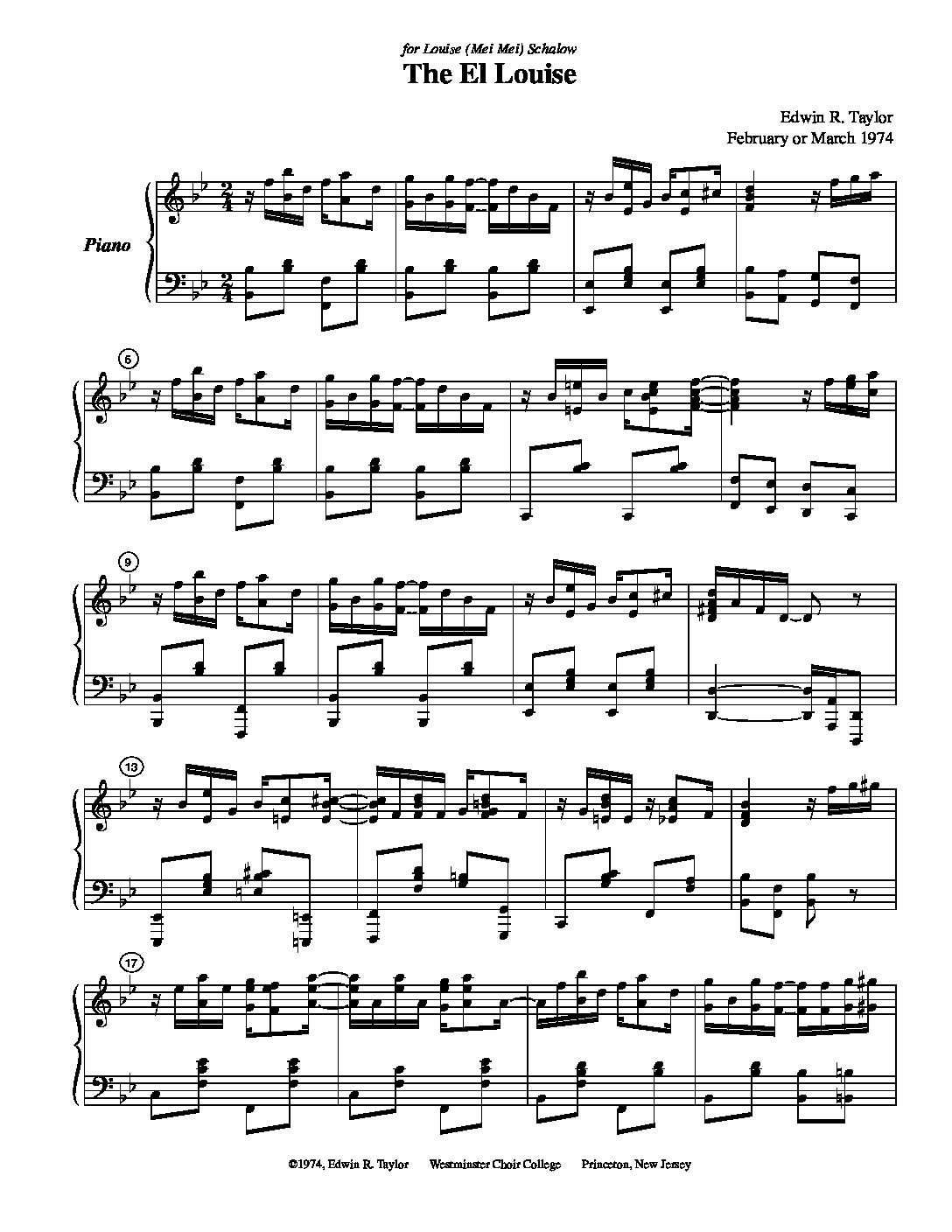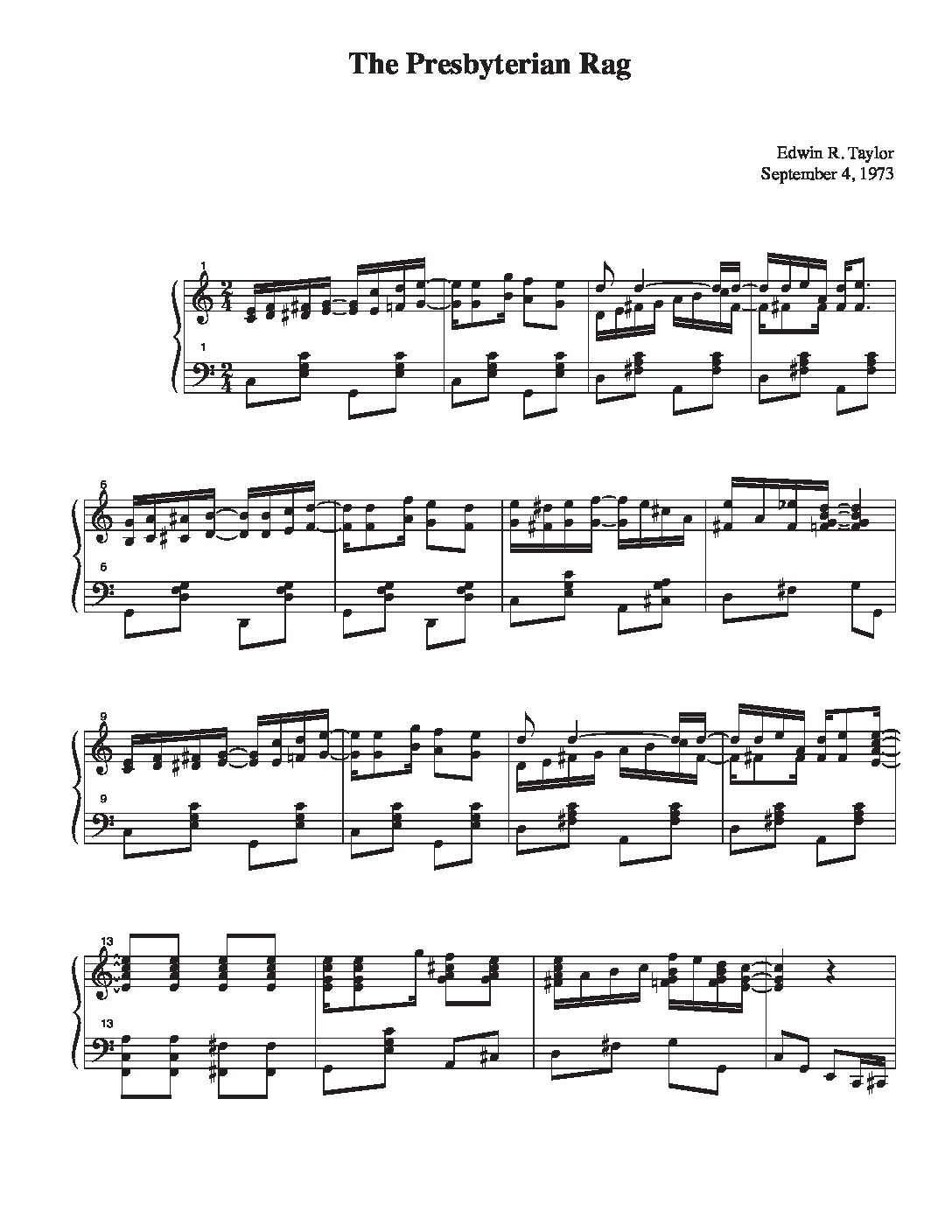Piano Rags
“There’s nothing better than a good rag!” “Ragtime is happy music.” “You just can’t be sad when you hear a piano playing ragtime.” “My toes were a-tappin’ all the time you were a-playin’!” Such frequent remarks bring joy to my soul whenever I share any of my piano rags in public, or for a single person, or in recording. I have composed 17 new piano rags as they serve as excellent and fun concert piano repertoire, piano recital encores, and encores in general,
Ragtime, a uniquely American syncopated musical phenomenon, has been a strong presence in musical composition, entertainment, and scholarship for over a century. Emerging and evolving during the mid-1890’s, ragtime compositions and performances quickly spread across the continent boosting the sale of pianos and greatly swelling the ranks of the recording industry by the early 1900’s. While ragtime style, like jazz (another distinctly American musical art form), is a bit difficult to describe, purists generally agree and stand by the precise definition: “Ragtime is a genre of musical composition for the piano, generally in duple meter and containing a highly syncopated (ragged) treble lead over a rhythmically steady bass.”
Ragtime ‘came to me’ at the close of my junior year at Westminster Choir College after our trek through music history had brought us up to the year 1900. I ‘wrote’ my first rag at a gas station (with nary a piano in sight) while waiting for my jalopy to be repaired. The rag and the car were finished in simultaneity whereupon I raced home, played it for my parents a bunch of times, then penciled it out on manuscript paper and inked it over that evening. Since that day, June 2, 1973, ragtime has never left me, and I’m ever ready to share one on any moment’s notice!
The “King of Ragtime,” Scott Joplin (1868-1917), developed his own form for most of his rags, that being AABBACCDD. I took things a bit further, however. While 14 of my rags are in simple ABA form, I invented a new form back in the 1970’s, and have since composed 3 rags in my unique and copyrighted ABRA CADABRA form. Yes, in my three ‘Abra Cadabra’ rags, each the A, B, C, and D sections are 16 bars in length, with a 4-bar “R” section (or riff) that modulates from the conclusion of the B section (in the sub-dominant) back to the A section (tonic). Have a listen, and see if your toes and feet don’t start tapping unaware!

Songs of Home
- Released: 7/10/2018
- Label: Universal Sounds Group
- Format: Digital Download, CD

Reflection of Hope
- Released: 10/5/2005
- Label: Universal Sounds Group
- Format: Digital Download, CD















